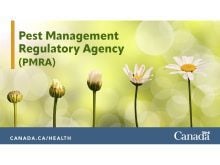The Canadian bison industry was relieved this month to learn that the federal government will not place Plains bison on its threatened species list.
Canadian and regional bison associations had lobbied against such a move, arguing it would have damaged their industry.
“We feel there would have been some pretty significant economic consequences,” said Terry Kremeniuk, executive director of the Canadian Bison Association.
“We believe it would have had an impact on the demand for bison products.”
Kremeniuk said the general public does not understand what threatened species means.
Read Also

Saskatchewan dairy farm breeds international champion
A Saskatchewan bred cow made history at the 2025 World Dairy Expo in Madison, Wisconsin, when she was named grand champion in the five-year-old Holstein class.
Even though the designation would have applied only to plains bison on public lands, namely the wild herds, it likely would have created a public perception that the species, generally, is near extinction, he said, which would have discouraged people from eating bison meat.
Plains bison are far from extinct. Their number has gone from fewer than 1,000 in the late 1800s to more than 500,000 today, mainly because of bison ranchers.
“We truly believe it’s a conservation success story,” Kremeniuk said.
Environment Canada tabled a report last November that recommended placing Plains bison on the threatened species list. However, Mark Silzer, a Saskatchewan bison producer and president of the Canadian Bison Association, argued that the report from the Committee on the Status of Endangered Wildlife in Canada was incomplete.
In a news release, he said the committee “largely ignored the enormous pool of genetic diversity found in private herds of Plains bison which graze in natural environments comparable to those of managed public herds.”
Kremeniuk said the endangered species designation also could have affected trade with the United States, making it more difficult to export bison or bison products to that country.
“With the protectionist environment, it would make the process much more difficult.”
In Canada, close to 2,000 producers raise about 230,000 bison.
The industry generates sales of more than $50 million a year, even with the effects of BSE on Canadian ruminant producers.
Kremeniuk said the bison industry will work with government and conservation groups to ensure the growth of public herds, including the possibility of establishing private conservation herds.














